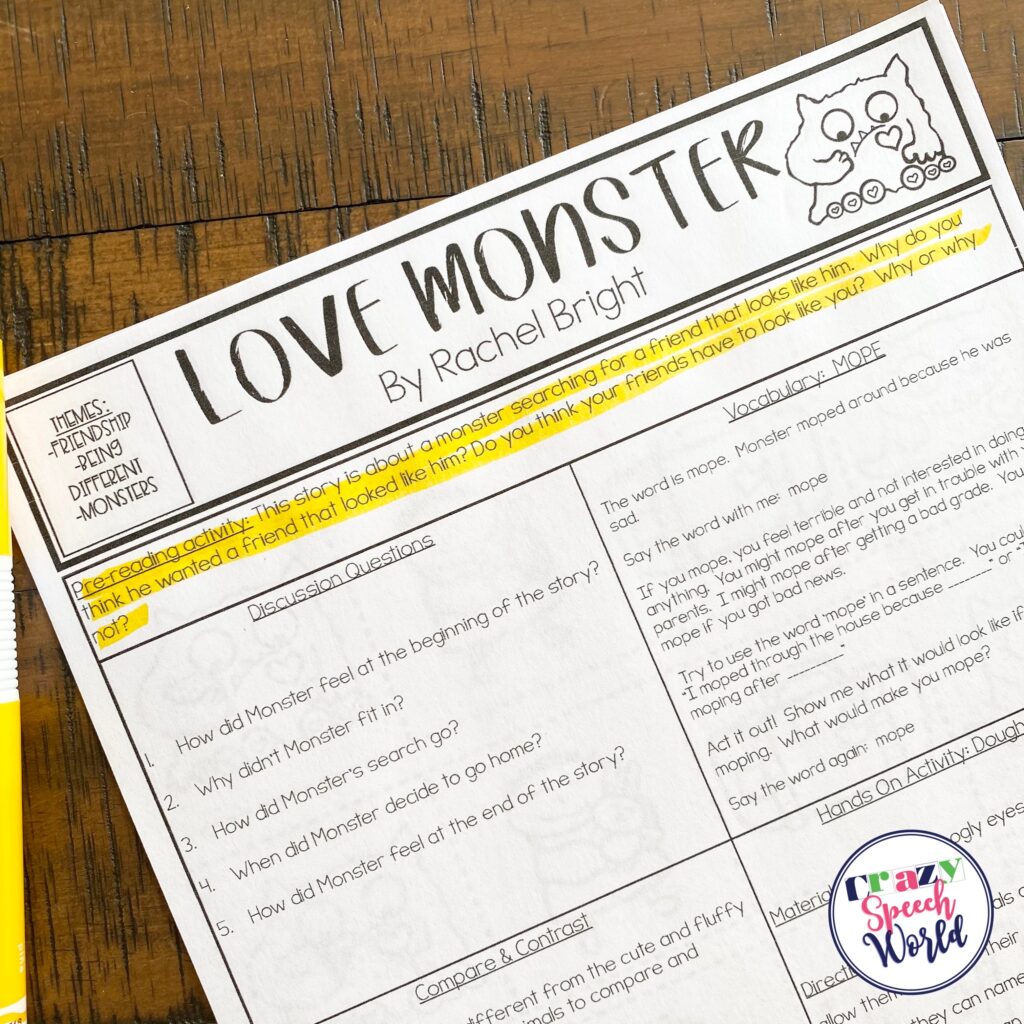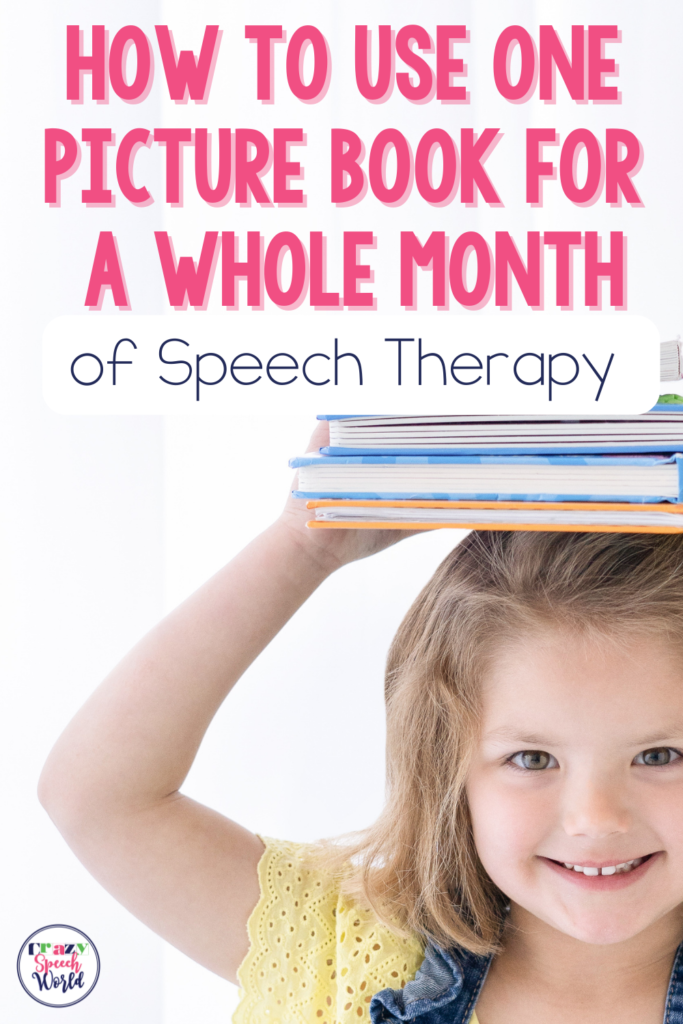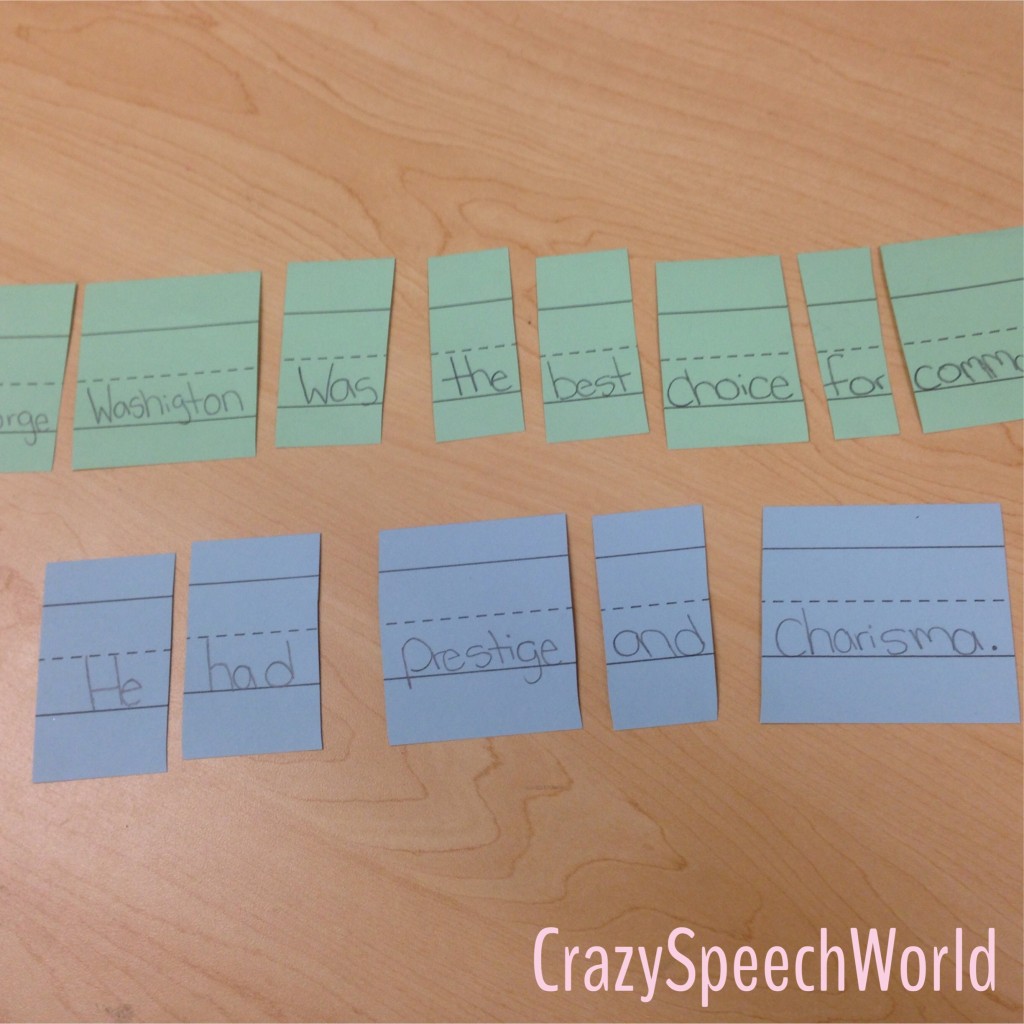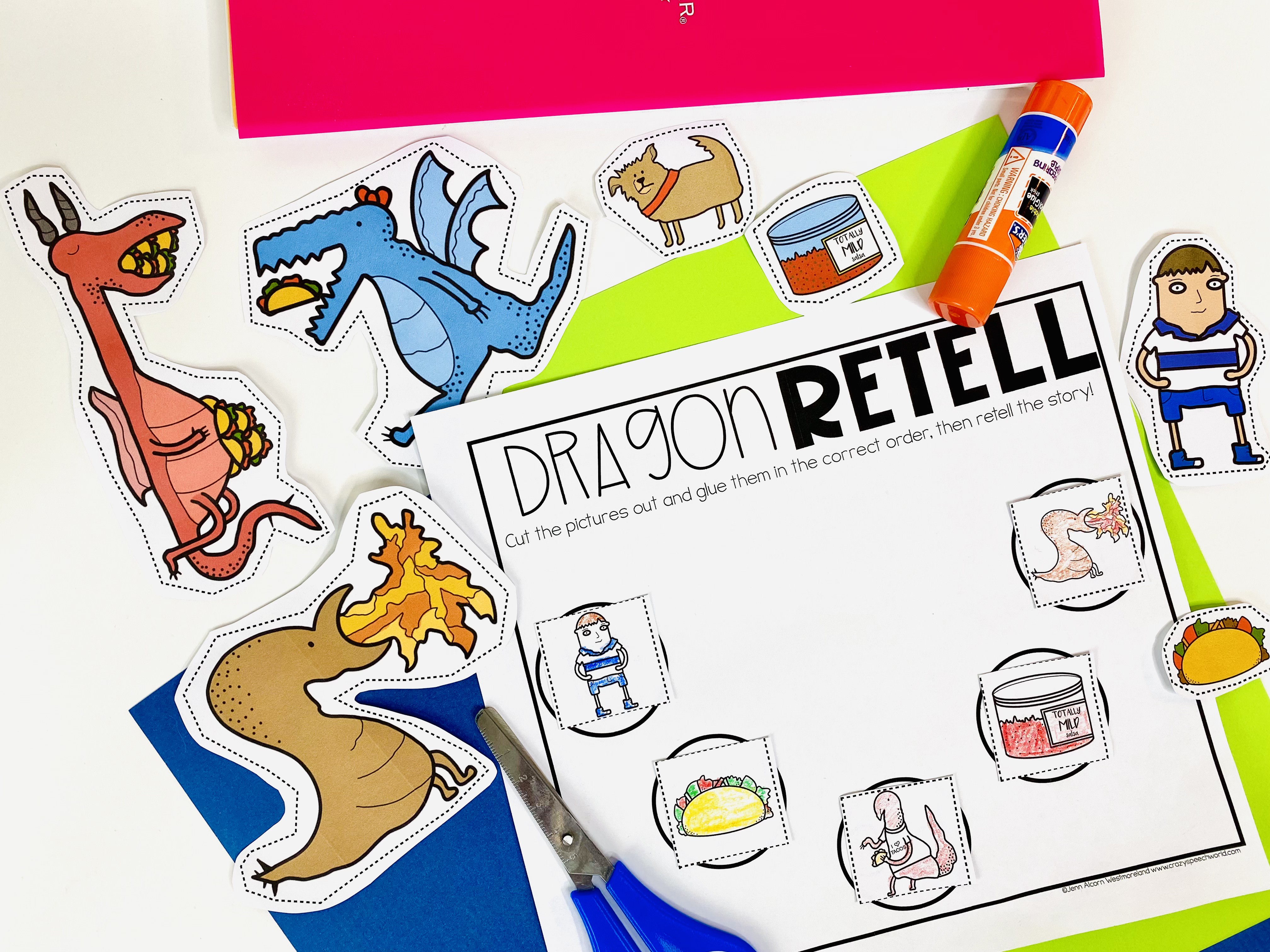Do you know how to use one picture book for multiple speech therapy sessions? It's easier than you think it is, check out my roadmap for implementing this literacy-based intervention.
When I say I can use a book for a whole entire month, people always ask me how, so I wanted to share with you an example of how I do it. Keep in mind this is just one way you could do it out of many, but it gives you a good idea of how to structure your sessions using one picture book.
This structure is based on the work of Teresa Ukrainetz and Ronald Gillam for developing literature based units. If you don't have this book, I highly recommend it!
Day 1: Pre-reading activities
These activities are meant to activate students' background knowledge and aid in their comprehension of the story you are about to read. You can utilize graphic organizers, conversation starters, or even things like music to accomplish this. Check out this post for more detailed information on pre-reading activities, plus a free checklist!

Day 2: Shared Book Reading & discussion
Shared book reading is an interactive, research-based method of doing read alouds with children that is extremely effective. This article outlines how to implement dialogic reading with some helpful bookmarks that you can print and use as reminders.
“Reading style is of paramount importance: dialogic reading styles that encourage additional interaction with the text significantly improve word learning.”
– Flack et al., 2017
Once you have completed your shared reading, you should discuss the story with comprehension and story grammar questions. These SHOULD NOT be quizzical, it should be a discussion, with you scaffolding student responses if they are unsure or incorrect.
Day 3: Review Reading & Vocabulary
Since day 3 will likely be the start of a new week, it's always a good idea to review the story. You can read it again, review the story grammar, or use a summary. Then, move on to learn some new words! Your vocabulary choices are super important, you should be choosing Tier 2 words with child-friendly definitions. If you are unsure how to do this, I encourage you to check out this post.

You can define and discuss the words, encouraging wordplay and use. Other ideas include creating a bulletin board for the words you chose or having your students create a personal dictionary they can add the vocabulary to.
Day 4: Syntax Activities
Here is where I like to incorporate some close reading strategies for targeting syntax. Whatever your student(s) need to work on, you can target using the examples in the book. This is where book choice really comes into play!
Find the sentences in the story that use the structure you want to target. Have your students read them again and discuss the parts of the sentence.
Use sentence strips to write the sentence and cut it apart to manipulate the words or substitute words. This would also be a great opportunity to incorporate the vocabulary you worked on in the previous session. Then, they can create different sentences with the target concepts on their own. Make it silly! Whatever helps to keep them engaged is going to keep them learning.
Day 5: Narrative Activities
There are so many different ways to work on narrative retelling and it's one of my favorite things to target! You might need to read the story again for this session, depending on your students' level of understanding during the past 4 sessions.
Some ways I like to work on narratives are using brain-compatible learning, use retelling pictures from a book companion, foldables or having students do quick drawings to depict the story. You can also pair these activities with a manipulative like Story Grammar Marker. You can also use these to check in on the syntax and semantic targets you have previously worked on. This session might spill over into another and that's totally ok!
Day 6: Pragmatic Activities
Social language is ALWAYS a good goal to use books for! You can role play the scenarios from the story, and discuss the inferences you can make for characters' feelings or perspectives. You can also do alternate events and discuss how doing something different might have changed the story.
Again, be thoughtful with your book choice if this is something you need to target a goal with. And if it isn't a specific goal, then your students can always benefit from social-emotional learning! Just incorporate their language skills in the activity… you can easily target comprehension, vocabulary, or syntax in role play.
Day 7: Hands-on activities
Hands-on activities are always a fun way to work on skills while doing something super engaging. This can be a fun craft, game, sensory bin, or recipe. Here are some examples, just click the link to see how we did it in my therapy room:
- Read Dragons Love Tacos and make paper tacos with articulation or vocabulary words in them.
- Read If You Give a Dog a Donut, grab some inflatable donuts and play a game or eat some real donuts!
- Create a ‘snow' sensory bin with The Snowy Day
- Feed the rabbit sensory bin with Tops & Bottoms
- Pair the game “Jumping Jack” with Too Many Carrots
Day 8: Parallel Story
A parallel story is where you take the story and create a new one that has a very similar plot but with different characters and elements. For example, in the story “Bear Wants More” the main character is a bear who wakes up from his hibernation and is hungry. So you could ask your students, what is another reason someone would be very hungry. Then you can brainstorm characters around those circumstances and create a similar story together.
References:
Gillam, R. B., & Ukrainetz, T. (2007). 2. In Contextualized language intervention: Scaffolding prek-12 literacy achievement (pp. 59–94). essay, Pro-ed.
Flack, Z. M., Field, A. P, & Horst, J. (2017). The effects of shared storybook reading on word learning: a meta-analysis. Developmental Psychology. https://doi.org/10.1037/dev0000512












![Speech-Language Pathologists (SLPs) play a crucial role in children's language development. One often overlooked but highly beneficial area to incorporate into speech therapy sessions is print knowledge. Understanding the importance of print knowledge can enhance therapy outcomes and foster literacy skills in children. I recently worked on a paper with some colleagues about the importance […]](https://i.pinimg.com/236x/ce/7f/bd/ce7fbd4a90a9683531d8b43d60ee2a68.jpg)
![Are you gearing up to supervise Speech-Language Pathology (SLP) graduate students this semester? Wondering how to initiate a positive and welcoming atmosphere? Here's a glimpse into a simple yet effective approach: Welcome Email: Setting the Tone A few days before the semester kicks off, I initiate a warm welcome by sending out a thoughtful email […]](https://i.pinimg.com/236x/c9/6b/cc/c96bccc987e6dacdaaf50eb3db1b9c47.jpg)

